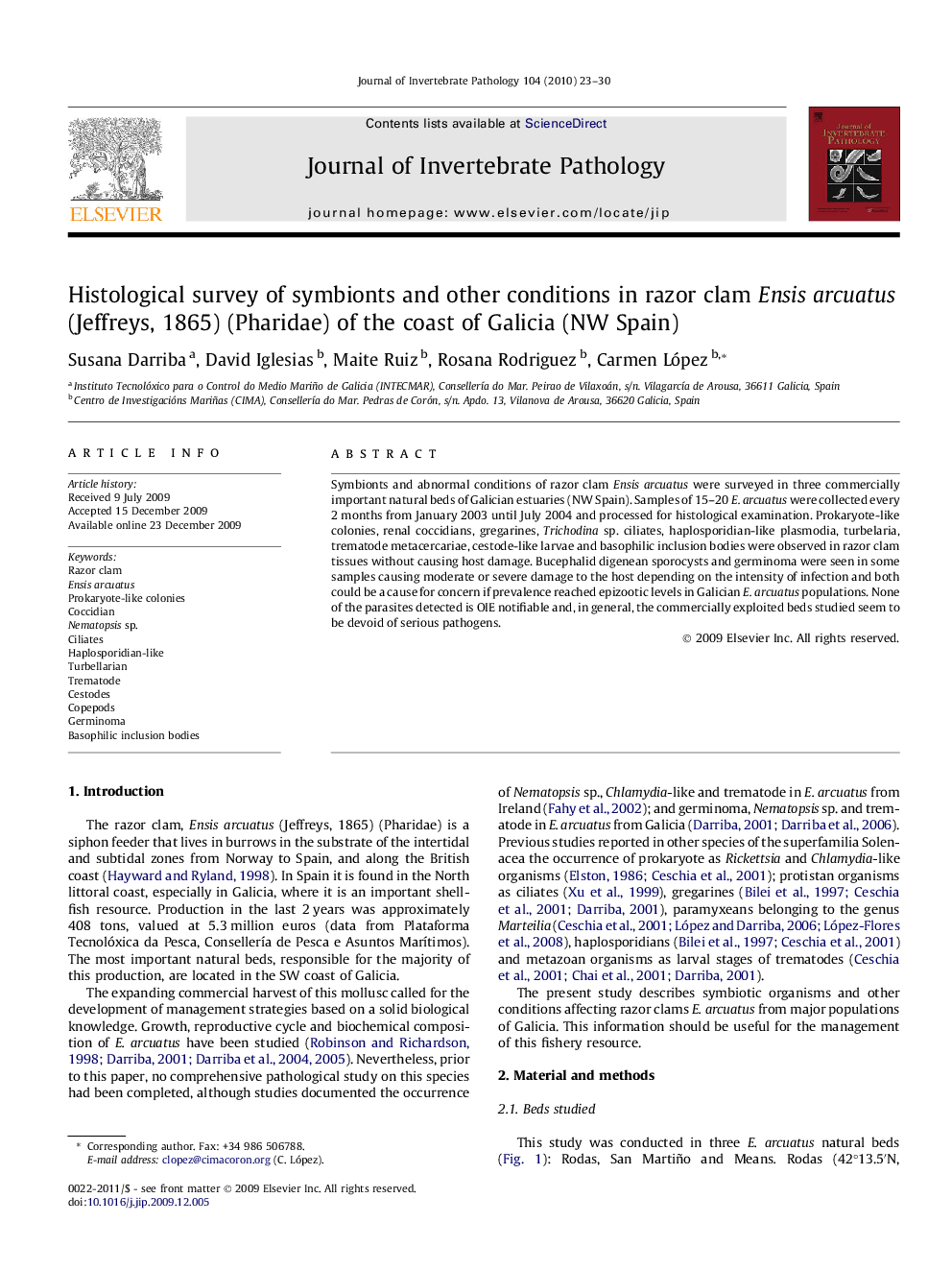| Article ID | Journal | Published Year | Pages | File Type |
|---|---|---|---|---|
| 4558287 | Journal of Invertebrate Pathology | 2010 | 8 Pages |
Abstract
Symbionts and abnormal conditions of razor clam Ensis arcuatus were surveyed in three commercially important natural beds of Galician estuaries (NW Spain). Samples of 15-20 E. arcuatus were collected every 2Â months from January 2003 until July 2004 and processed for histological examination. Prokaryote-like colonies, renal coccidians, gregarines, Trichodina sp. ciliates, haplosporidian-like plasmodia, turbelaria, trematode metacercariae, cestode-like larvae and basophilic inclusion bodies were observed in razor clam tissues without causing host damage. Bucephalid digenean sporocysts and germinoma were seen in some samples causing moderate or severe damage to the host depending on the intensity of infection and both could be a cause for concern if prevalence reached epizootic levels in Galician E. arcuatus populations. None of the parasites detected is OIE notifiable and, in general, the commercially exploited beds studied seem to be devoid of serious pathogens.
Related Topics
Life Sciences
Agricultural and Biological Sciences
Ecology, Evolution, Behavior and Systematics
Authors
Susana Darriba, David Iglesias, Maite Ruiz, Rosana Rodriguez, Carmen López,
